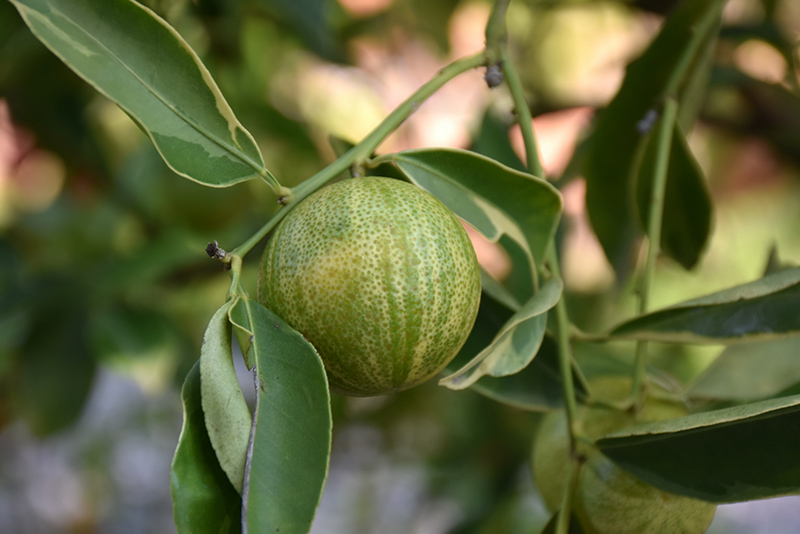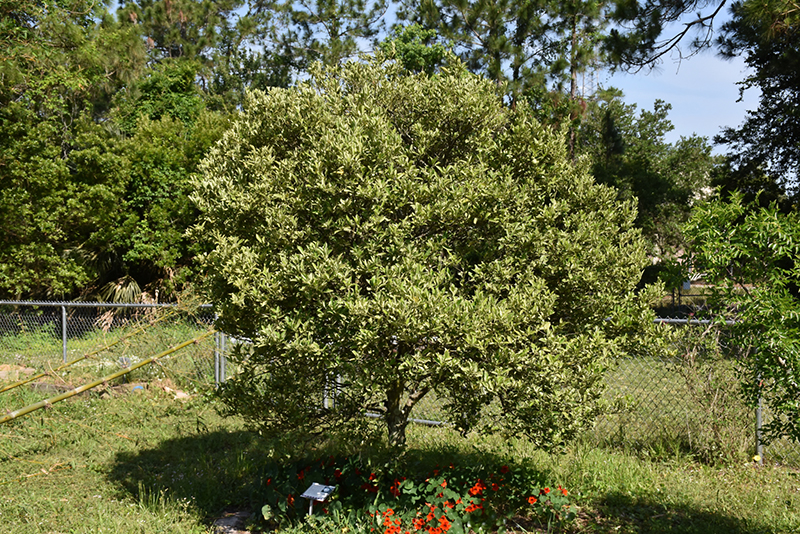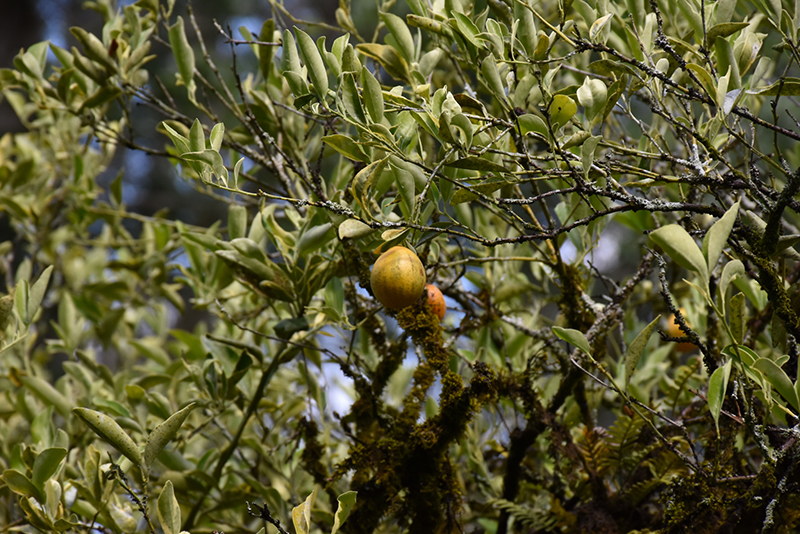Plant Finder
Centennial Variegated Kumquat
Fortunella margarita 'Centennial'
Height: 10 feet
Spread: 10 feet
Sunlight:
![]()
![]()
Hardiness Zone: 8a
Description:
Attractive dark green foliage with gray-green and cream variegation; fragrant flowers in late spring produce striped fruit, maturing to orange, with very sweet rinds and acidic flesh; exceptionally hardy; a great patio container plant or landscape accent
Edible Qualities
Centennial Variegated Kumquat is a large shrub that is commonly grown for its edible qualities, although it does have ornamental merits as well. It produces orange oblong fruit which are typically harvested when mature. The fruits have a sweet taste.
The fruit are most often used in the following ways:
- Fresh Eating
- Cooking
- Juice-Making
- Sauces
Features & Attributes
Centennial Variegated Kumquat features showy clusters of fragrant white star-shaped flowers with buttery yellow eyes at the ends of the branches from late spring to early summer. It has attractive creamy white-variegated dark green foliage with hints of grayish green. The glossy oval leaves are highly ornamental and remain dark green throughout the winter. It features an abundance of magnificent orange berries from late fall to late winter. The fruit can be messy if allowed to drop on the lawn or walkways, and may require occasional clean-up.
This is a multi-stemmed evergreen shrub with an upright spreading habit of growth. Its average texture blends into the landscape, but can be balanced by one or two finer or coarser trees or shrubs for an effective composition. This is a relatively low maintenance plant, and is best pruned in late winter once the threat of extreme cold has passed. It is a good choice for attracting birds, bees and butterflies to your yard. It has no significant negative characteristics.
Aside from its primary use as an edible, Centennial Variegated Kumquat is sutiable for the following landscape applications;
- Accent
- Hedges/Screening
- Orchard/Edible Landscaping
- Container Planting
Planting & Growing
Centennial Variegated Kumquat will grow to be about 10 feet tall at maturity, with a spread of 10 feet. It has a low canopy with a typical clearance of 1 foot from the ground, and is suitable for planting under power lines. It grows at a medium rate, and under ideal conditions can be expected to live for 50 years or more.
This shrub is quite ornamental as well as edible, and is as much at home in a landscape or flower garden as it is in a designated edibles garden. It does best in full sun to partial shade. It does best in average to evenly moist conditions, but will not tolerate standing water. It is particular about its soil conditions, with a strong preference for rich, acidic soils. It is somewhat tolerant of urban pollution. This is a selected variety of a species not originally from North America.
Centennial Variegated Kumquat is a good choice for the edible garden, but it is also well-suited for use in outdoor pots and containers. Its large size and upright habit of growth lend it for use as a solitary accent, or in a composition surrounded by smaller plants around the base and those that spill over the edges. It is even sizeable enough that it can be grown alone in a suitable container. Note that when grown in a container, it may not perform exactly as indicated on the tag - this is to be expected. Also note that when growing plants in outdoor containers and baskets, they may require more frequent waterings than they would in the yard or garden.






